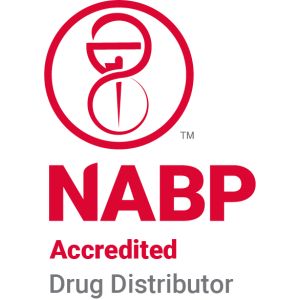The Challenge and Risk of Continual Sourcing: Why Squeezing Your Supply Chain Can Cost You More
Looking to save costs? Of course—all businesses are. That’s because there are two sides to profitability: driving topline revenue growth and ensuring your operations are as efficient as possible.
In recent years, seeking this efficiency, many OEMs have sought to squeeze all potential cost savings out of their inbound supply chain. They move from a smaller to a larger supplier, for example, or they consolidate components from several niche suppliers into a single, preferred supplier.
On paper, this move can promise savings—in money and time. But in reality, it often doesn’t work.
Why? The answer is complex, and this decision can end up costing you more—much more—while also increasing your risk. Let’s take a deeper dive into the most common pitfalls.
#1: Lack of internal resource coordination
The supply chain isn’t just about components—it requires a great deal of intricate coordination. The sourcing team’s performance measurements are based on controlling and reducing costs. The move to a different supplier often doesn’t make clear the full scope of what the supply chain requires from your internal resources, such as engineering, quality inspection, and qualifying new suppliers. This coordination is a very difficult and time-consuming thing to do and changing it can end up adding more cost than your current state. It can boil down to the reality that internal resources aren’t deployed for a cost-savings measure the same way they are for activities like new product development, when everyone contributes their very best strategic thinking.
#2: Lack of specialization
Sometimes, larger or preferred suppliers don’t specialize in the same things that the niche or smaller suppliers do. Or, a hasty transfer-out ends up creating a communication or information gap. The result can often be that the new supplier doesn’t have your required equipment, for instance, or lacks another critical component piece. Without it, you’ll hit a stock-out that might delay production—which, of course, can be very risky and costly.
#3: Favoring big savings vs. incremental savings
Many OEMs have criteria for supply chain cost-savings changes. Often these criteria set a high barrier for cost savings in the order of hundreds of thousands of dollars. Obviously, they’re good decision-making filters, but inflexible adherence to them can mean OEMs miss out on smaller, incremental savings opportunities that add up. Being open and flexible about five or ten smaller cost-savings measures, for instance, can really add up over time.
#4: Overlooking the importance of relationships
Isn’t it important that your team and your supplier teams know how to work well together? Supply chain coordination is a process that takes time to establish. Having to reestablish it with a new supplier can hamper productivity—and drive up cost.
#5: Not realizing the truth that not all cost savings are equal
It’s important to understand everything about the proposed savings when you make a supplier shift. A high dependency on labor isn’t going to be cost-efficient and may not be sustainable long-term, so you want to be strategic in evaluating a supplier shift not only for the short-term but also for the years ahead. Another factor to consider is the additional value-added services that some suppliers can offer, like inspection, packaging, and assembly. It’s important to preserve independence in certain processes like quality-critical inspection to protect patient safety standards and manage your risk.
These common pitfalls can ramp up your risk, which shows up in backorders, stock-outs, quality critical inspection failure, and patient risk if your product isn’t manufactured to the required standards. Any one of these can wipe out any potential savings you may have found on paper.
If you have encountered one of these pitfalls, consider calling in expertise. Our Tier 1 services and capabilities like cleaning, quality critical inspection, and packaging can reduce your risk and augment your labor capacity. In addition, particularly with Tier 1 service, we can suggest incremental cost savings that can end up adding up over time.
At Millstone, we get it. We believe quality drives patient success. That’s why we’ve perfected all the capabilities medical device manufacturers need to get to market. Today we offer post-manufacturing and aftermarket services to more than 50 customers, including some of the top 10 orthopedic companies in the world. We are constantly evolving our processes and services to help OEMs achieve sustainable success. We offer clean room packaging, medical device specific warehousing, finished goods distribution, loaner kit management, advanced inspection and reverse logistics services—all with an unparalleled focus on quality.
What could we help you do better? Learn more at https://millstonemedical.com.
Comments are closed.



